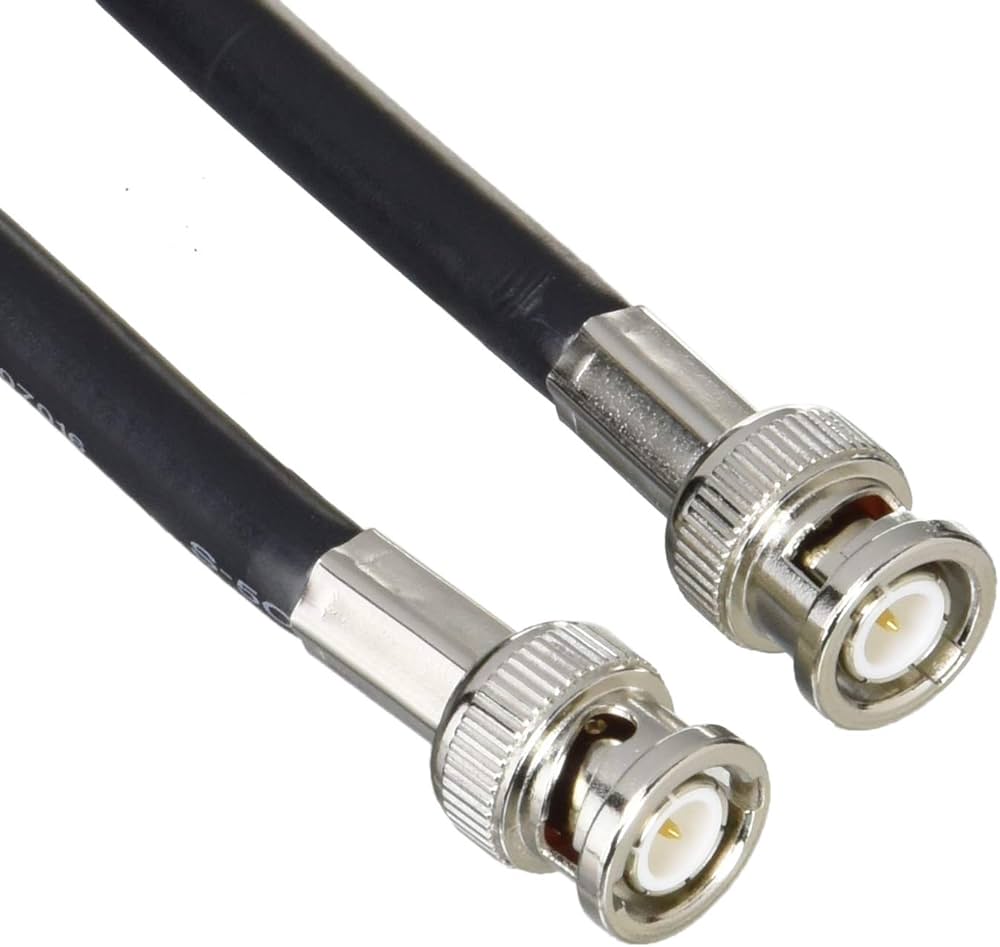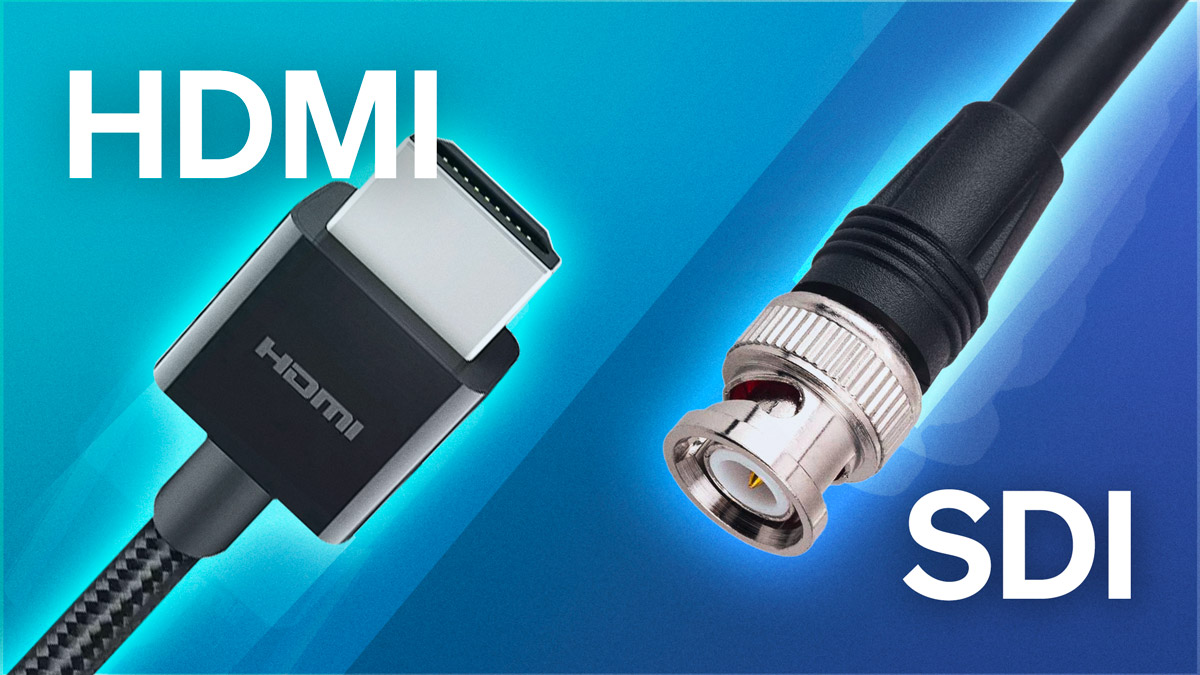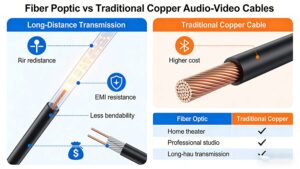In der Welt der Videotechnik, HDMI (High Definition Multimedia Interface) und SDI (Serial Digital Interface) sind zwei beliebte Schnittstellen für die Übertragung von Audio- und Videosignalen. Aber was unterscheidet sie voneinander? Schauen wir uns das einmal genauer an.
HDMI vs. SDI
|
Merkmal
|
HDMI
|
SDI
|
|
Steckertypen
|
BNC (Bajonett Neill - Concelman)
|
|
|
Übertragungsentfernung
|
15 - 30 Meter (je nach Kabelqualität und Ausführung)
|
Bis zu 100 Meter oder mehr
|
|
Datenübertragungsrate
|
HD - SDI: 1,485 Gbps3G - SDI: 2,97 Gbps6G - SDI: 6 Gbps12G - SDI: 12 Gbps
|
|
|
Kompatibilität
|
Weit verbreitet in der Unterhaltungselektronik
|
Hauptsächlich für professionelle Rundfunk- und Videoproduktionsanlagen
|
|
Audio-Unterstützung
|
Mehrkanaliger Surround-Sound (z. B. Dolby Atmos, DTS - HD)
|
Unterstützt bis zu 16 Kanäle, ausgerichtet auf professionelle Audioanforderungen
|
|
Kosten
|
Im Allgemeinen erschwinglich, Massenproduktion für Verbraucher
|
Teurer, gebaut für professionelle Qualität und Zuverlässigkeit
|
Steckertypen
HDMI-Anschlüsse gibt es in verschiedenen Größen, darunter Standard, Miniund Mikro. Der HDMI-Standard ist am weitesten verbreitet und wird häufig in Unterhaltungselektronik wie Fernsehern, Laptops und Spielkonsolen eingesetzt. Ein typisches Heimkino-Setup verwendet zum Beispiel wahrscheinlich einen Standard-HDMI-Kabel um einen Blu-ray-Player an das Fernsehgerät anzuschließen.

SDI hingegen verwendet BNC-Stecker (Bayonet Neill - Concelman). Diese Stecker sind für ihren sicheren Verriegelungsmechanismus bekannt, der in professionellen Umgebungen entscheidend ist. In einem Live-Sendestudio werden SDI-Kabel mit BNC-Steckern verwendet, um eine stabile Verbindung zwischen Kameras und Videokreuzschienen zu gewährleisten.

Übertragungsentfernung
HDMI eignet sich hervorragend für Verbindungen mit kurzer Reichweite. Im Allgemeinen ist die maximal empfohlene Länge für eine HDMI-Kabel beträgt etwa 15 bis 30 Meter, je nach Kabelqualität und Version des HDMI-Standards. Bei einem Home-Entertainment-System, bei dem ein Laptop an einen Fernseher im selben Raum angeschlossen ist, würde ein HDMI-Kabel von 5 bis 10 Metern Länge perfekt funktionieren.
SDI ist jedoch für Übertragungen über größere Entfernungen konzipiert. Es kann Entfernungen von bis zu 100 Metern oder mehr ohne signifikante Signalverschlechterung überbrücken. Dies macht es ideal für Großveranstaltungen wie Sportübertragungen, bei denen die Kameras weit entfernt vom Kontrollraum platziert werden müssen. In einem Fußballstadion zum Beispiel können SDI-Kabel hochwertige Videosignale von den Kameras auf dem Spielfeld zu dem draußen geparkten Produktionswagen übertragen.
Datenübertragungsrate
HDMI hat sich im Laufe der Jahre weiterentwickelt und unterstützt nun höhere Datenraten. HDMI 2.0 kann bis zu 18 Gbit/s verarbeiten, was für 4K-Videos mit 60 Bildern pro Sekunde ausreichend ist. Die neueste HDMI 2.1 kann bis zu 48 Gbit/s unterstützen, was 8K-Video und höhere Bildwiederholraten ermöglicht. Diese hohe Datenrate ermöglicht die Übertragung von hochwertigen, unkomprimierten Audio- und Videosignalen und sorgt für ein beeindruckendes Erlebnis für die Verbraucher.
Auch bei SDI gibt es verschiedene Versionen mit unterschiedlichen Datenraten. HD - SDI (High - Definition Serial Digital Interface) hat eine Datenrate von 1,485 Gbit/s und eignet sich für hochauflösende Standardvideos. Mit der Weiterentwicklung der Technologie wurden 3G - SDI (mit einer Datenrate von 2,97 Gbit/s), 6G - SDI (6 Gbit/s) und 12G - SDI (12 Gbit/s) eingeführt, um höhere Auflösungen wie 4K zu unterstützen. SDI ist in der Lage, unkomprimierte Videosignale zu übertragen, was für die Aufrechterhaltung der höchsten Qualität in der professionellen Videoproduktion entscheidend ist.
Kompatibilität
HDMI ist auf dem Markt für Unterhaltungselektronik äußerst beliebt. Es ist in fast allen modernen Fernsehern, Laptops, Spielkonsolen und Blu-Ray-Playern zu finden. Diese weit verbreitete Kompatibilität macht es den Verbrauchern leicht, verschiedene Geräte an ihre Home-Entertainment-Einrichtungen anzuschließen. Zum Beispiel kann eine PlayStation 5 mit nur einem Kabel an einen Fernseher mit HDMI-Anschluss angeschlossen werden.
SDI hingegen wird hauptsächlich in professionellen Rundfunk- und Videoproduktionsanlagen verwendet. Kameras, Videokreuzschienen, Monitore und Aufzeichnungsgeräte, die in professionellen Studios und bei Live-Veranstaltungen eingesetzt werden, verfügen in der Regel über SDI-Schnittstellen. Es gibt zwar Adapter für die Konvertierung zwischen HDMI und SDI, diese werden jedoch nicht so häufig verwendet wie die direkte Verbindung innerhalb ihrer jeweiligen Ökosysteme.
Audio-Unterstützung
HDMI wurde entwickelt, um sowohl Audio- als auch Videosignale über ein einziges Kabel zu übertragen. Es unterstützt verschiedene Audioformate, einschließlich Mehrkanal-Surround-Sound wie Dolby Atmos und DTS - HD. Dies kommt Heimkinosystemen zugute, denn so können die Benutzer hochwertige Audio- und Videoinhalte genießen.
SDI unterstützt auch Audio, ist aber eher auf professionelle Audioanforderungen ausgerichtet. Es kann mehrere Audiokanäle übertragen, wobei einige SDI-Versionen bis zu 16 Kanäle verarbeiten können. In der professionellen Videoproduktion sorgen die SDI-Audiofunktionen dafür, dass bei Live-Konzerten oder Dokumentaraufnahmen hochwertige Audiosignale erfasst und mit dem Video übertragen werden.
Kosten
HDMI-Kabel und Geräte sind im Allgemeinen erschwinglicher, insbesondere auf dem Verbrauchermarkt. Dies liegt daran, dass sie in Massenproduktion für eine breite Palette von Unterhaltungselektronik hergestellt werden. Die Hersteller verlangen für einfache HDMI-Kabel nur wenige Dollar, und HDMI-fähige Geräte wie Fernseher und Laptops sind erschwinglich.
SDI-Geräte hingegen sind teurer. Wir entwickeln die Kabel, Stecker und Geräte für den professionellen Einsatz und bauen sie so, dass sie höhere Qualitäts- und Zuverlässigkeitsstandards erfüllen. So dominieren beispielsweise SDI-Kameras die professionelle Videoproduktion und kosten weit mehr als HDMI-Modelle für Verbraucher.
Zusammengefasst, HDMI ist die erste Wahl für Verbraucheranwendungen und bietet Komfort, Kompatibilität und Kosteneffizienz. SDI ist die professionelle Wahl für die Videoproduktion, die für eine große Reichweite, unkomprimiertes Video und zuverlässige Verbindungen unerlässlich ist.








